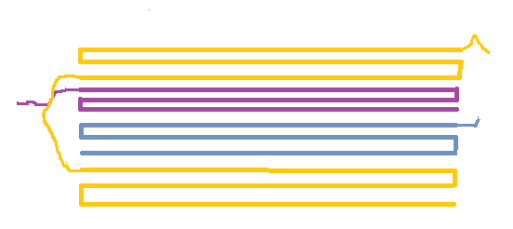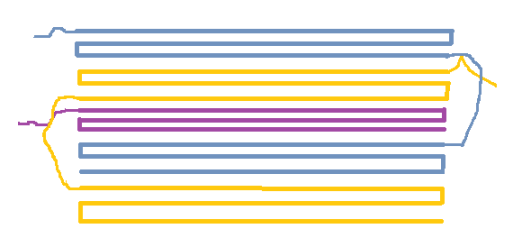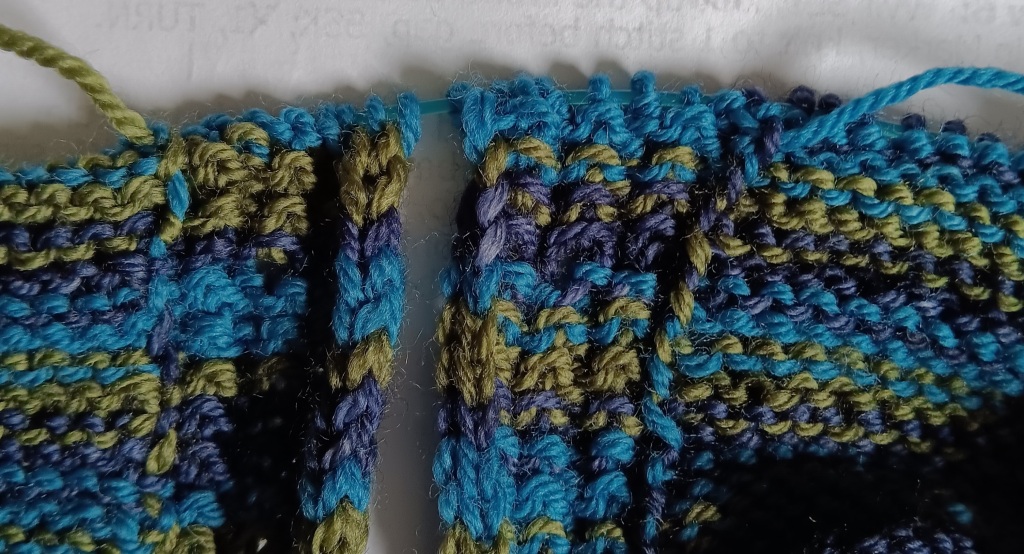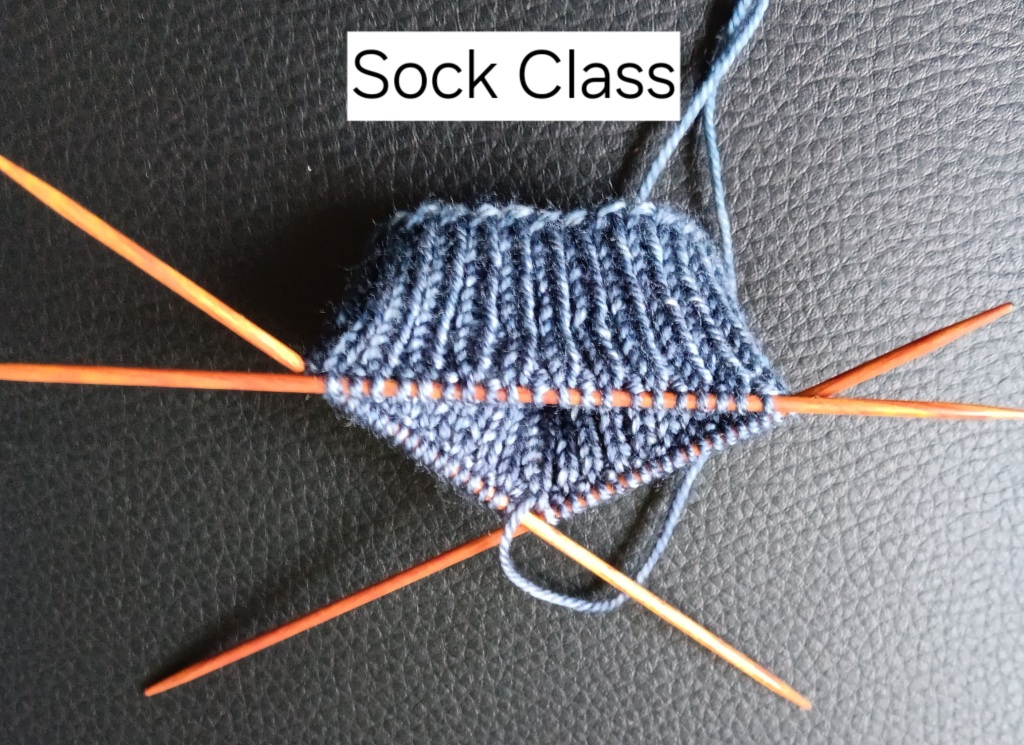Slip stitches are easy to work. You’ve probably done them to work decreases and maybe a selvage or two. Have you used them to work a decorative 2 colour pattern? If you haven’t here’s how it works on a garter stitch scarf.
Tech notes: Slip stitches are always worked purlwise. That means insert your needle into the stitch as if you were going to purl the stitch and transfer it over to the right needle without working it. It’s simply a transfer of a stitch from left needle to right needle. The yarn, while working the slip stitch, is always carried across on the Wrong Side of the fabric. OK, that’s it.
When using 2 colours in a standard garter stitch stripe (2 rows in colour 1 and 2 rows in colour 2), slipping one stitch pulls the colour of the stitch you slipped up into the row you are now working. So working [K1, Slip 1] makes every other stitch a different colour. In this first pattern the white yarn works K1 and the blue yarn is slipped. The blue yarn from the previous row is pulled up into the white row. On the wrong side row the white yarn is knit and the blue yarn is slipped again (with the yarn in front – the wrong side of the fabric). The working yarn (white) moves back and forth between knitting and slipping, much like when you work a 1×1 rib. A bit of a pain but I think it’s worth it.
Rows 1 & 2: With blue, knit. Row 3 (RS): With white, work [K1, with yarn in back SL1]. Row 4: (WS) Work [with yarn in front SL1 (the blue stitch), K1 (the white stitch)]. The white stitches are in garter stitch (knit on both the RS and WS). The blue stitches look like stockinette stitches but they aren’t, they have been slipped over two rows.

If we can work this as [K1, SL1] we could also work it as [K2, SL2]. Why not? That’s easy enough, right?
This time the first two knit rows are white and the slipped stitch rows are worked in blue. Rows 1 & 2: With white, knit. Row 3 (RS): Work [K2, SL2]. Row 4 (WS): Work [with yarn in front SL2, K2]. You can see the difference from the 1×1 pattern below it. Cool, eh? Just a little change and it looks quite different. Switching which colour works the first 2 knit rows also makes it look different.

Why stop here. What if on Row 4 (WS) we purled instead of knit. What would that do? This is the first 1×1 stitch pattern worked as: 2 knit rows in blue, Row 3: With white [K1, SL1]. Row 4: (WS) Work [with yarn in front SL1, P1]. On this wrong side row you are keeping the yarn to the front of your work, on the purl row side, all the time which makes this quite a lot easier to work. None of that back and forth business, yay. But a little harder to see clearly. Can you see that it now looks like there are 2 stockinette rows worked between the blue garter ridges?

Now that we’re on a roll let’s do the 2×2 stockinette version. Work 2 knit rows in white. Row 3: (RS) With blue, work [K2, SL2]. Row 4: (WS) Work [with yarn in front SL2, P2]. It’s easier here to see the blue stitches are knit on the right side and purled on the wrong side. It looks like the white garter stitch rows are floating on top of a blue stockinette stitch fabric or maybe I’m being a bit fanciful here, ha, ha.

One, two, three, four. Here’s the total affect.

Stay safe and happily knitting,
Deb
Gauge-Free and Any Gauge patterns by Deb
Cabin Fever No-Sew pattern by Deb & Lyn











































